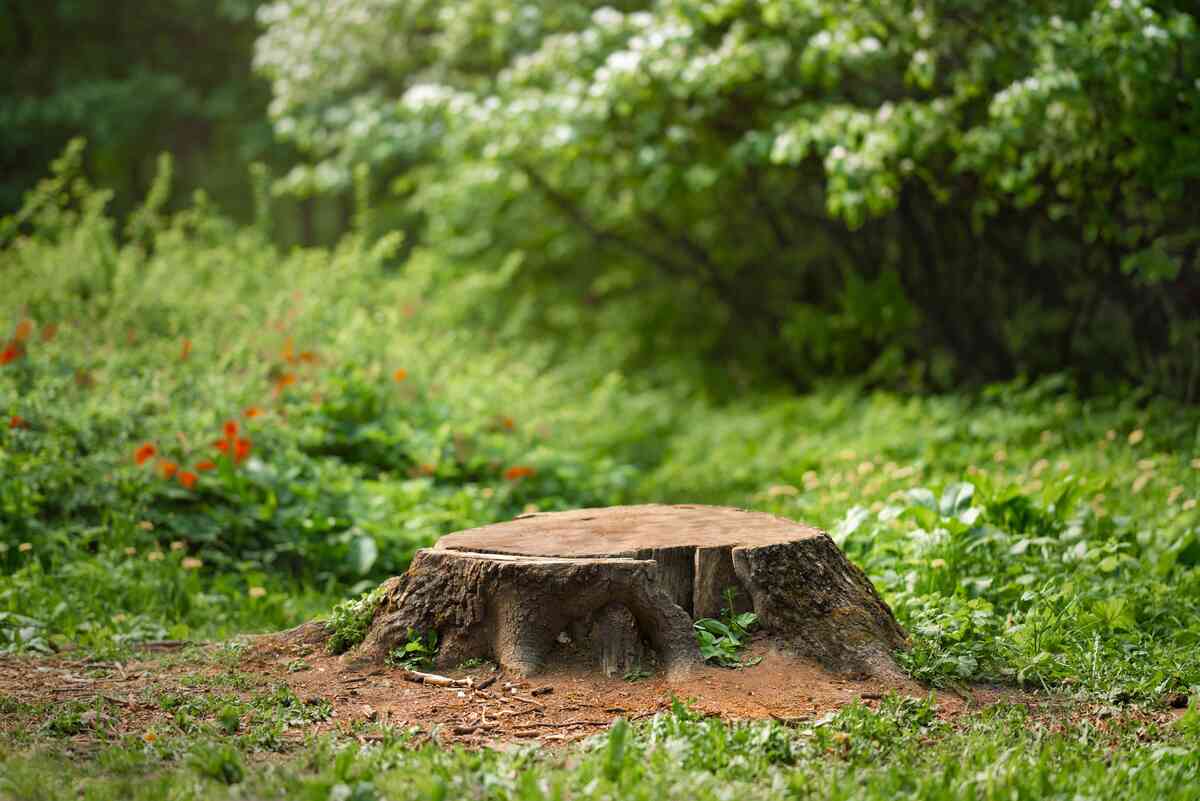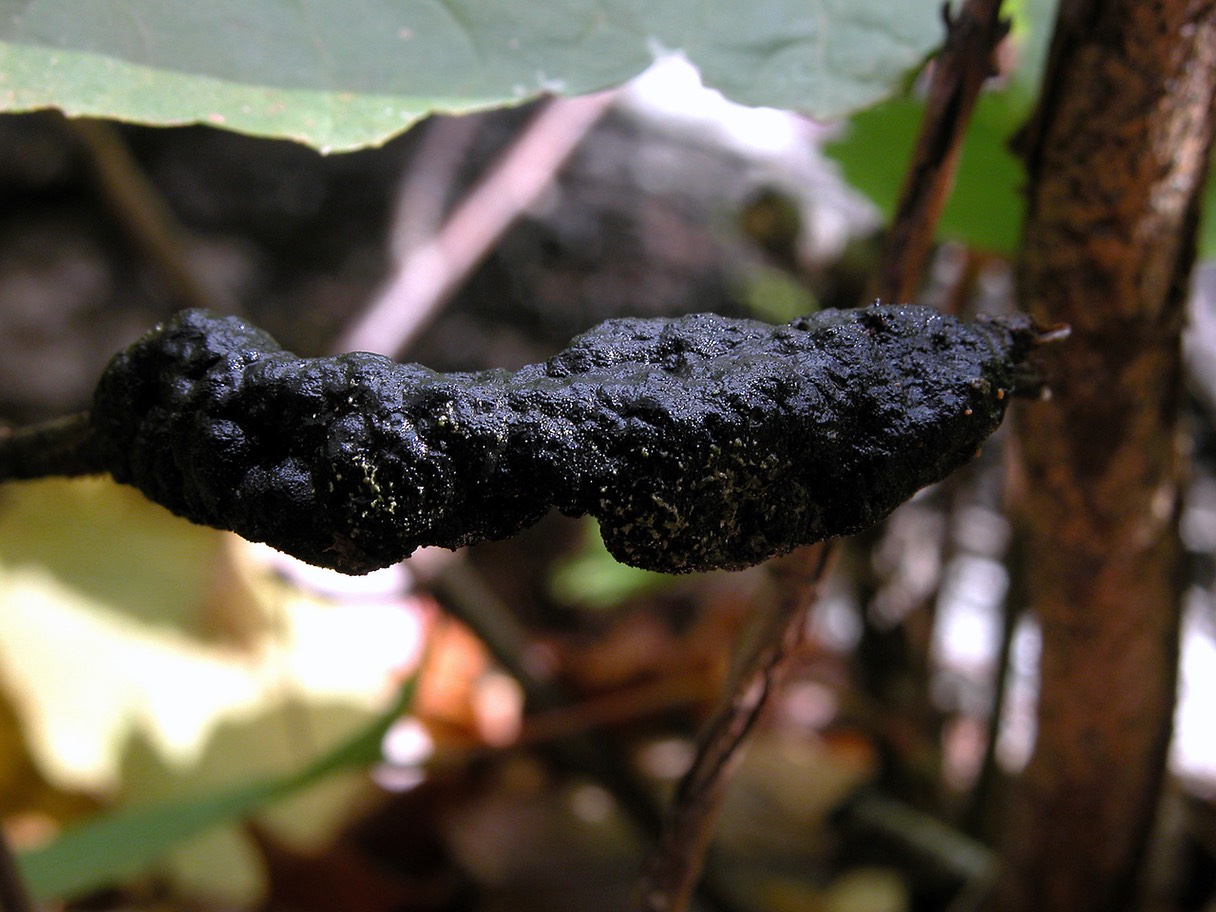Home>Gardening Tips and Tricks>Problem Solving>How To Get Rid Of Trees


Problem Solving
How To Get Rid Of Trees
Modified: January 22, 2024
Learn effective problem-solving techniques to safely and efficiently get rid of unwanted trees. Discover step-by-step methods for tree removal and find solutions to common tree-related issues.
(Many of the links in this article redirect to a specific reviewed product. Your purchase of these products through affiliate links helps to generate commission for Chicagolandgardening.com, at no extra cost. Learn more)
Table of Contents
Introduction
When it comes to landscaping and property maintenance, trees can provide beauty, shade, and even environmental benefits. However, there are instances when removing a tree becomes necessary. Whether it’s due to disease, structural issues, or the need for additional space, tree removal can be a daunting task.
In this article, we will provide you with a comprehensive guide on how to get rid of trees effectively and safely. We’ll cover the importance of assessing the need for tree removal, safety precautions, legal considerations, different methods of tree removal, and more.
Removing a tree requires careful planning and execution to ensure the safety of yourself, nearby structures, and other plant life. It is important to remember that tree removal can be hazardous, and it is always recommended to seek professional help if you are uncertain about the process.
However, if you are confident in your abilities and want to tackle the job yourself, we will also provide you with valuable information and tips on DIY tree removal techniques.
Furthermore, once a tree is removed, there is still the matter of dealing with the leftover stump and disposing of the tree debris. We’ll guide you through the process of removing tree stumps and offer tips on how to manage the disposal efficiently and responsibly.
Lastly, we will touch on the importance of tree replacement and maintenance, as removing a tree often leaves a void in your landscape. Replacing the tree with a suitable alternative and ensuring proper upkeep will preserve the overall natural beauty and balance of your property.
So, if you have a tree that needs to be removed, whether for safety reasons, aesthetics, or space considerations, this article is your ultimate resource. Let’s dive in and explore the ins and outs of tree removal!
Assessing the Need for Tree Removal
Before embarking on the tree removal process, it is crucial to assess the need for removing the tree. Here are some factors to consider:
- Health and Stability: Evaluate the overall health of the tree. Look for signs of disease, decay, or pest infestation. Additionally, assess the tree’s stability and if it poses a risk of falling or causing damage to nearby structures.
- Location and Space: Consider the tree’s proximity to your house, utility lines, and other structures. If the tree is too close and poses a threat, removal might be the best option. Additionally, assess whether the tree is taking up valuable space that could be used more effectively.
- Aesthetic Appeal: Sometimes, the decision to remove a tree is driven by the desired aesthetics of your landscape. If the tree doesn’t blend well with the overall design or hampers the growth of other plants, removal might be necessary.
- Invasive Tree Species: Certain tree species can be highly invasive and detrimental to the local ecosystem. If you have an invasive species on your property, it is essential to consider removing it to prevent harm to native plants and wildlife.
While assessing the need for tree removal, it is advisable to consult with an arborist or a professional tree removal service. They can provide expert advice based on their knowledge and experience.
Keep in mind that tree removal is not always the only solution. In some cases, tree trimming or pruning might suffice to address the issue at hand. A professional assessment will help determine the most appropriate course of action.
Remember, never rush into removing a tree without proper evaluation. Take the time to thoroughly assess the situation and make an informed decision. By doing so, you can ensure the safety and well-being of your property and maintain the harmony of your landscape.
Safety Precautions and Legal Considerations
When it comes to tree removal, safety should be your top priority. The process can be dangerous if not approached with caution. Here are some important safety precautions to keep in mind:
- Assess the Area: Before you start the tree removal process, carefully assess the area and identify any potential hazards. Look for nearby power lines, structures, and other obstacles that may interfere with the tree removal process.
- Use Appropriate Safety Gear: Always wear the necessary safety gear, including a hard hat, safety glasses or goggles, ear protection, heavy-duty gloves, and steel-toed boots. This will help protect you from potential injuries caused by falling debris or sharp branches.
- Tools and Equipment: Ensure that you have the right tools and equipment for the job. Use a sturdy ladder or a bucket truck for accessing higher branches, and make sure your cutting tools, such as chainsaws or pruning shears, are in good working condition.
- Proper Cutting Techniques: Familiarize yourself with proper cutting techniques and follow industry best practices. Avoid cutting branches that are under tension, as they can snap back and cause injury. Cut in small increments and be mindful of your surroundings at all times.
- Secure the Area: If you are removing a tree near a public space or a high-traffic area, consider cordoning off the area to prevent accidents. Use caution tape or safety cones to clearly mark the work zone and alert others to the potential hazards.
In addition to safety precautions, it is also essential to be aware of any legal considerations surrounding tree removal. Depending on your location, there may be local regulations or bylaws that govern tree removal. It is crucial to consult with your local municipality or a professional arborist to ensure compliance with any applicable laws or restrictions.
Some municipalities require permits for tree removal or have specific guidelines for protected species. Violating these regulations can result in fines or legal consequences. By understanding and adhering to the legal requirements, you can avoid potential legal issues and ensure a smooth tree removal process.
Remember, when it comes to tree removal, safety and compliance go hand in hand. Taking the necessary precautions and following the legal guidelines will help protect not only yourself but also your property and the environment.
Methods of Removing Trees
When it comes to removing trees, there are several methods to choose from. The most suitable method will depend on factors such as the size of the tree, its location, and any potential obstructions. Here are some common methods of tree removal:
- Felling: Felling is the process of cutting down a tree at its base and letting it fall to the ground. This method is suitable for trees with ample space around them and no obstacles.
- Directional Felling: Directional felling involves cutting a tree in a specific direction to ensure it falls safely and away from any structures or power lines. This method requires precision and expertise to control the tree’s descent.
- Sectional Felling: Sectional felling is used when there are obstacles or limited space around the tree. The tree is gradually dismantled by cutting it into smaller sections starting from the top and working downwards.
- Climbing and Disassembling: For trees located in tight spaces or near structures, climbing and disassembling are often the preferred methods. A skilled arborist will climb the tree using special equipment and remove it piece by piece from the top down.
- Crane-assisted Removal: In cases where a tree is extremely large or poses a significant risk, a crane may be used to assist with the removal process. This method allows for controlled lifting and precise placement of tree sections.
It is important to note that tree removal can be a complex and potentially dangerous task. It is highly recommended to hire a professional tree removal service for larger or more challenging tree removals. They have the necessary experience, equipment, and expertise to ensure a safe and efficient removal process.
Before selecting a removal method, carefully assess the tree and its surroundings. Consider the size, location, and any potential hazards that may affect the tree removal process. Consulting with an arborist or a professional tree removal service will help you determine the best method for your specific situation.
Remember, tree removal requires careful planning and execution to ensure the safety of everyone involved and to minimize any potential damage to property or the environment.
Hiring a Professional Tree Removal Service
When it comes to tree removal, hiring a professional tree removal service is often the wisest choice. They have the knowledge, experience, and specialized equipment to handle tree removal safely and efficiently. Here are some reasons why you should consider hiring a professional:
- Expertise: Professional tree removal services have extensive knowledge of different tree species, their growth patterns, and potential risks. They can accurately assess the health and stability of a tree and determine the most appropriate removal method.
- Safety: Safety is paramount during tree removal. Professional tree removal services have the necessary safety equipment and training to protect themselves, your property, and surrounding structures. They follow industry best practices to ensure a safe and incident-free removal process.
- Insurance Coverage: Hiring a professional tree removal service provides an added layer of protection. Reputable companies are insured, which means you won’t be held liable for any accidents or damages that may occur during the tree removal process.
- Efficiency and Time-saving: Professional tree removal services have the right tools and equipment to complete the job efficiently. They are experienced in handling different types of trees and can complete the removal process in a timely manner, saving you valuable time and effort.
- Additional Services: In addition to tree removal, many professional tree removal services offer a range of related services. These may include stump grinding, tree trimming, pruning, and tree care advice. By hiring professionals, you can benefit from their comprehensive expertise.
When selecting a professional tree removal service, it is important to do thorough research. Look for companies with a solid reputation and positive customer reviews. Request quotes from multiple services and compare their pricing, experience, and services offered. Additionally, ensure that the company is licensed and certified to perform tree removal in your area.
By hiring a professional tree removal service, you can have peace of mind knowing that the job will be done safely, efficiently, and with minimal impact to your property. They will handle all aspects of the removal, from assessing the tree and obtaining necessary permits (if required) to the disposal of tree debris.
While it may be tempting to attempt tree removal yourself, especially for smaller trees, it is crucial to recognize the potential risks involved. Tree removal can be hazardous, and without proper knowledge and equipment, you can put yourself and others in danger. Investing in a professional tree removal service is a worthwhile investment that ensures the job is done right.
DIY Tree Removal Techniques
If you are confident in your abilities and have the necessary tools, you may choose to remove a tree yourself. However, keep in mind that tree removal can be dangerous, and it is always recommended to seek professional help if you are unsure or dealing with larger trees. Here are some DIY tree removal techniques:
- Safety First: Before you begin, ensure you have the appropriate safety gear, including gloves, safety glasses, a hard hat, and sturdy footwear. Assess the area for any potential hazards and keep bystanders at a safe distance.
- Identify the Fall Zone: Determine the direction in which the tree should fall by identifying the natural lean and any potential obstacles. Establish a clear fall zone and make sure there is ample space for the tree to fall safely.
- Make a Notch: With a chainsaw, make a horizontal cut (known as a notch) on the side of the tree where you want it to fall. This cut should be below your planned felling height and about a third of the tree’s diameter.
- Back Cut: On the opposite side of the notch, make a straight horizontal cut to meet the point of the notch. This cut should be slightly higher than the bottom of the notch and parallel to the ground.
- Retreat Safely: Once you have made the back cut, remove yourself from the area along a predetermined escape path. Make sure you have a clear escape route and maintain a safe distance until the tree has fallen.
- Dealing with Larger Trees: If you are dealing with a larger tree, consider using a rope or cable to guide the tree’s fall direction. This technique, known as tree guiding, can help ensure a more controlled and safe removal process.
It’s important to note that DIY tree removal is not suitable for all situations. If the tree is near power lines, structures, or is a large and complex job, it is strongly advised to hire a professional tree removal service. They have the expertise and equipment necessary to tackle more challenging tree removals.
When in doubt, consult with an arborist or seek advice from a professional tree removal service. They can assess the situation, provide guidance, and determine the best course of action.
Remember, safety should be your top priority. If you are unsure or uncomfortable with any part of the tree removal process, it is better to err on the side of caution and seek professional assistance.
Removing Tree Stumps
After successfully removing a tree, you are often left with an unsightly stump in your yard. While it may seem challenging to get rid of tree stumps, there are several methods you can employ to remove them effectively.
Here are some popular techniques for removing tree stumps:
- Hand Digging: For smaller stumps, hand digging can be a viable option. With a shovel, dig around the stump, exposing the roots. Use pruning shears or a saw to cut the roots, gradually loosening the stump from the ground. Once the roots are severed, you can easily remove the stump.
- Chemical Stump Removal: Chemical stump removal involves the use of special stump removal chemicals. These chemicals accelerate the decomposition process, making it easier to remove the stump. Follow the instructions provided by the manufacturer and apply the chemical solution according to the recommended guidelines.
- Stump Grinding: Stump grinding is a popular and effective method for removing tree stumps. Using a stump grinder, a professional can grind the stump down to below ground level. This method is quick, efficient, and leaves you with wood chips that can be used as mulch or landscaping material.
- Burning: Burning a stump is another option, although it requires caution and is generally not recommended in urban or residential areas due to safety and potential fire hazards. If burning is permitted in your area, drill several holes in the stump, fill them with flammable materials, and ignite the stump. Regularly monitor the fire and take necessary precautions.
- Hiring a Stump Removal Service: If you prefer a hassle-free and efficient solution, hiring a professional stump removal service is the way to go. They have the expertise, equipment, and experience to remove stumps safely and effectively, leaving your yard clear and free of any remnants.
Choose the method that best suits your preferences, budget, and the size of the stump. Keep in mind that some techniques, such as stump grinding and hiring a professional service, may yield better and faster results, especially for larger or hard-to-remove stumps.
Before attempting any stump removal method, check with your local authorities or homeowner’s association to ensure that you comply with any regulations or guidelines.
Remember, removing tree stumps can be labor-intensive and time-consuming. If you are unsure or dealing with a difficult stump, it is always recommended to seek professional assistance to ensure a safe and efficient removal process.
Disposing of Tree Debris
Once you have removed a tree or its stump, you will be left with tree debris that needs to be properly disposed of. Here are some methods for handling and disposing of tree debris efficiently and responsibly:
- Composting: If you have a compost pile or bin, consider using the tree debris as organic material for composting. Shredded leaves, branches, and small twigs can be added to your compost pile to create nutrient-rich compost for your garden.
- Mulching: Larger tree branches and trunk sections can be turned into mulch. Utilizing a wood chipper or hiring a mulching service, you can transform the debris into valuable mulch that can help enrich your garden beds, suppress weed growth, and retain soil moisture.
- Curbside Pickup: Many municipalities offer curbside pickup services for tree debris. Check with your local waste management department to determine if this service is available in your area. Follow any guidelines provided, such as cutting branches into manageable lengths and bundling them for collection.
- Yard Waste Facility: Local recycling centers or yard waste facilities often accept tree debris. Contact your nearest facility to inquire about drop-off locations, fees (if any), and any specific requirements for tree debris disposal.
- Hiring a Debris Removal Service: If you have a significant amount of tree debris or find it challenging to handle the disposal yourself, consider hiring a professional debris removal service. They will efficiently and responsibly dispose of the tree debris on your behalf.
It is crucial to dispose of tree debris in an environmentally friendly manner and in compliance with local regulations. Improper disposal can contribute to pollution or legal consequences. Avoid burning or illegal dumping of tree debris, as these practices can have adverse effects on the environment and may result in fines or penalties.
Before disposing of tree debris, it is important to remove any non-organic materials, such as nails or wires, and separate them for proper disposal. This will help prevent contamination and ensure the recycling or decomposition process is not disrupted.
By responsibly handling and disposing of tree debris, you can minimize waste, contribute to a healthier environment, and potentially benefit from the resulting compost or mulch for your own landscaping projects.
Remember, if you are uncertain about how to dispose of tree debris or have a significant amount to manage, it is advisable to seek guidance from local waste management authorities or professional debris removal services to ensure proper disposal methods are followed.
Tree Replacement and Maintenance
After removing a tree, it is essential to consider tree replacement to maintain the balance and beauty of your landscape. Here are some important factors to consider when replacing a tree and maintaining its health:
Choosing the Right Tree:
- Select a tree species that is suitable for your climate, soil conditions, and available space. Consider factors such as shade requirements, growth rate, and mature size.
- Diversify your tree selection to promote biodiversity and reduce the risk of disease or pest outbreaks.
- If possible, choose native tree species, as they are adapted to the local ecosystem and often require less maintenance.
Planting and Care:
- Follow proper planting techniques to ensure the success and establishment of the new tree. Dig a hole that is wide and shallow, ensuring the root collar is level with or slightly above the ground.
- Provide adequate water during the first few years to promote root development. Mulching around the base of the tree can help retain moisture and control weed growth.
- Regularly inspect the tree for signs of disease, pest infestation, or any other issues. Prune dead or damaged branches and ensure proper airflow to prevent moisture-related diseases.
Tree Maintenance:
- Regularly monitor the growth and health of the tree. Provide supplemental watering during dry periods and adjust fertilizer application based on soil tests and tree needs.
- Prune the tree as needed to maintain its structure, promote healthy growth, and remove any dead or hazardous branches. Ensure you follow proper pruning techniques and avoid over-pruning.
- Inspect and address any signs of disease or pest infestation promptly. Consult with an arborist or tree care professional for proper diagnosis and treatment options.
- Be cautious with lawn care equipment or construction activities around the tree, as these can cause damage to the roots or trunk. Avoid compacting the soil near the tree and creating unnecessary stress.
Tree replacement and maintenance require ongoing attention and care to ensure the growth and longevity of the new tree. Regular inspections, proper watering, and timely interventions will help establish a healthy and thriving tree in your landscape.
By replacing and maintaining trees, you contribute to the overall well-being of your property and the environment. Trees provide shade, improve air quality, and offer habitat for wildlife. They also enhance the aesthetics of your landscape, increase property value, and create a pleasant environment for you and your family to enjoy.
Remember, consulting with a local arborist or tree care professional can provide valuable guidance on choosing the right tree species, proper planting techniques, and ongoing maintenance practices. Their expertise will ensure that your newly planted tree thrives and provides enjoyment for many years to come.
Conclusion
Tree removal is sometimes necessary due to safety concerns, space limitations, or aesthetic reasons. However, it is important to approach tree removal with careful consideration and safety precautions in mind. Assessing the need for tree removal, consulting professionals when necessary, and using the appropriate methods are crucial steps to ensure a successful and safe removal process.
While DIY tree removal can be an option for smaller and less complex trees, it is always recommended to hire a professional tree removal service for larger or more challenging removals. Professional tree removal services have the expertise, equipment, and experience to handle the job efficiently and with minimal risk.
After removing a tree, there are additional considerations to keep in mind. Proper disposal of tree debris is important, and various options such as composting, mulching, or utilizing a yard waste facility can be pursued. Additionally, tree replacement and maintenance play a vital role in maintaining the aesthetic appeal and ecological balance of your landscape.
Overall, the process of tree removal involves careful planning, safety precautions, and responsible decision-making. By following the guidelines and considering professional help when necessary, you can successfully and safely remove trees while ensuring the long-term health and beauty of your property.
Remember, consulting with an arborist or a professional tree removal service will provide expert advice and guidance specific to your situation. Their expertise and knowledge will ensure that the tree removal process is conducted with the highest level of safety and efficacy.










